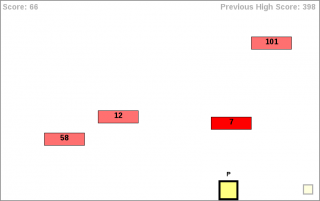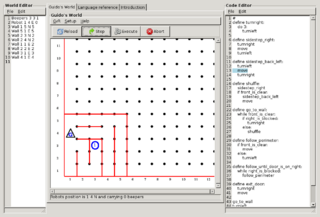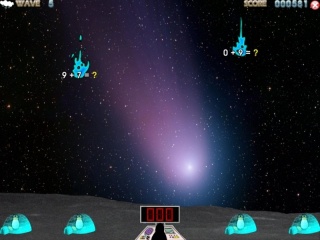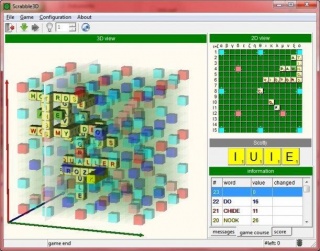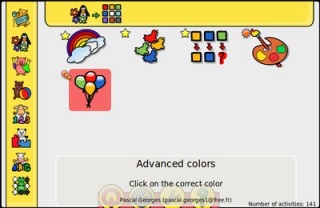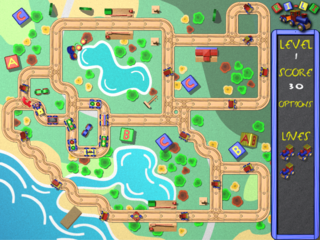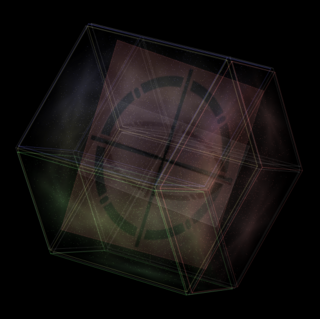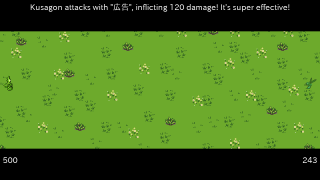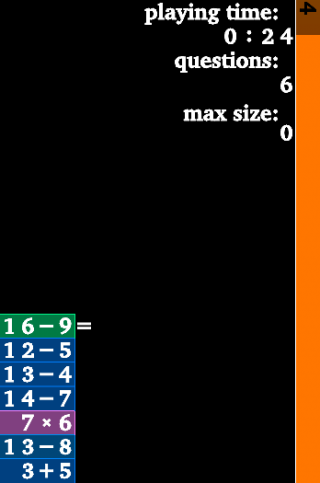Educational games
Educational games aim to increase knowledge or traing skills that are useful outside the gaming world.
List of Educational games[edit]
This is a list of free/libre educational games:
| Game | Screenshot | Last Release | Genres | Description | ||||||||||||||||||||||||
|---|---|---|---|---|---|---|---|---|---|---|---|---|---|---|---|---|---|---|---|---|---|---|---|---|---|---|---|---|
| PrimeShooter | 
|
2010-03-22 | Arcade, educational |
PrimeShooter is an abstract browser based shooter game licensed under the GPLv2. The player must shoot falling numbers with their divisors and scores points for clearing prime numbers. | ||||||||||||||||||||||||
| Guido van Robot | 
|
2010-03-04 | Programming education |
Guido van Robot is a programming language, an IDE and a tutorial designed as an introduction to the fundamentals of (Python) programming for beginners. It is licensed under the GNU GPL. The program includes a tutorial, whose latest release is 0.5. The program uses:
| ||||||||||||||||||||||||
| TuxMath | 
|
2011-05-04 | Educational |
TuxMath or Tux, of Math Command is a game made by Tux4Kids to help young children improve their maths. It is released under GPL3[3] The gameplay is to shoot mathematical expressions with answers. Defend penguins homes with math. There's also an asteroids type game included. A version was included on OpenSource Game Power volume 1. | ||||||||||||||||||||||||
| Scrabble3D | 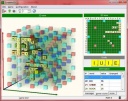
|
2015-03-01 | Board, Education |
Scrabble3D is computer version of the popular word puzzle board game. In addition to a 3D board, it supports the classic Scrabble and Superscrabble rules. Scrabble games can be played online against other players or locally against the computer. A physical version of the game on disc has been released by ADVPlans. | ||||||||||||||||||||||||
| GCompris | 
|
2024-02-21 | Educational |
GCompris is a high quality educational software suite comprising of numerous activities for children aged 2 to 10. Some of the activities are game orientated, but nonetheless still educational. Below you can find a list of categories with some of the activities available in that category.
Currently GCompris offers in excess of 100 activities and more are being developed. GCompris is free software, that means that you can adapt it to your own needs, improve it and, most importantly, share it with children everywhere. For more specific use, it can be easlily configured to be run in a kiosk mode, so small children cannot accidentally switch to other programs. On the technical level, GCompris is designed in a way which makes it easy to develop additional activities. | ||||||||||||||||||||||||
| Ri-li | 
|
2007-11-01 | Arcade |
Ri-li is an arcade game in which you drive a toy wood train engine across many levels. It is written by Dominique Roux-Serret. The latest version of the game is 2.0.1 on November 1st, 2007. It is written in the C++ programming language, using the SDL library. Its UI has 19 languages to choose from: Arabic, Breton, Chinese, Dutch, English, Esperanto, French, German, Hungarian, Italian, Japanese, Korean, Polish, Portuguese, Russian, Slovak, Spanish, Swedish, Turkish. | ||||||||||||||||||||||||
| Q | no image | 2013-04-16 | Educational, Trivia |
q (also known as quizbot) is a simple IRC quizbot by plaimi. It derives questions from a pool, gives out hints, and awards users who answer the questions correctly. All source code is available online[7], and patches are welcome. The bot is running an "official" instance in the registered channel #quiznode on irc.freenode.net.[8] | ||||||||||||||||||||||||
| Tesseract Trainer | 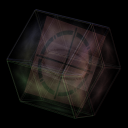
|
June 9th, 2005 | demo, stereograms, hyperspace, educational |
Tesseract Trainer is a demo that displays a tesseract (the four-dimensional hypercube, analogue of the three-dimensional cube) as a 2D image, or viewable as a 3D image using a method similar to that one for viewing stereograms. Although it contains shareware functionality (“Unregistered” is displayed in the corner, and a registration code ($8) request appears after some time of continuous running), the source code is available under a GPLv2-compatible license (apparently public domain except for the reused parts like GLUT). It is written in C++, and the latest version is 0.1.4, released on 2005-06-09. It used GLUT, SDL, among other libraries. The author released all the copyright rights for the game’s documentation. | ||||||||||||||||||||||||
| Tangomon | 
|
2020-09-11 | Educational |
Tangomon is an educational monster-battling game, similar in concept to the popular Pokemon series but with an educational twist. The player starts with one "Tangomon" and three "Tangojis". Tangomon are monsters which exist in the world of the game. Tangojis are used to command the player's Tangomon to attack and defend; they are terms the player wants to learn, e.g. vocabulary words. When the player feels they have learned a given Tangoji sufficiently, it can be converted into a "Tangokan", which can be used to capture defeated enemy Tangomon. The game does not have an ending. Instead, the goal of the game is to collect all Tangomon, and the player can then reset the game state and start over again from the beginning while keeping the same set of Tangojis and Tangokans. | ||||||||||||||||||||||||
| LifeFLOW3D | 
|
2018-03-29 | Educational |
LifeFLOW3D Digitarium lets you play with moving software creatures, as they explore their lush environments. In LifeFLOW3D, you interact with various geometric systems that respond to your avatar. Kids learn about space and time, and get a feeling for exciting ways to play with colors and shapes.[9] It is released under the GPL 3.0 license.[10] | ||||||||||||||||||||||||
| Garith | 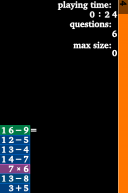
|
2014-09-18 | Educational |
garith is a game similar in spirit to BSD's "arithmetic" or TuxMath. The game asks you to perform a simple arithmetic operation within a certain time-frame. garith though is geared to improve your skills by stressing the operations you get more frequently wrong or that take longer to answer. The statistics are saved/restored across games, so that each game is tuned for your current arithmetic abilities. It is written by Yuri D'Elia in the C++ programming language using the FreeGLUT library. | ||||||||||||||||||||||||
- ↑ GvR developers
- ↑ 2.0 2.1 https://metadata.ftp-master.debian.org/changelogs/main/g/gvrng/stable_copyright
- ↑ [1] The license file in the github repository
- ↑ 4.0 4.1 project page
- ↑ 5.0 5.1 COPYING file
- ↑ Announcement of 13.11
- ↑ [2]q source code on github.
- ↑ [3]README.
- ↑ Official website for LifeFLOW3D
- ↑ LifeFLOW3D source (not accessible as of 2023-01-31)

